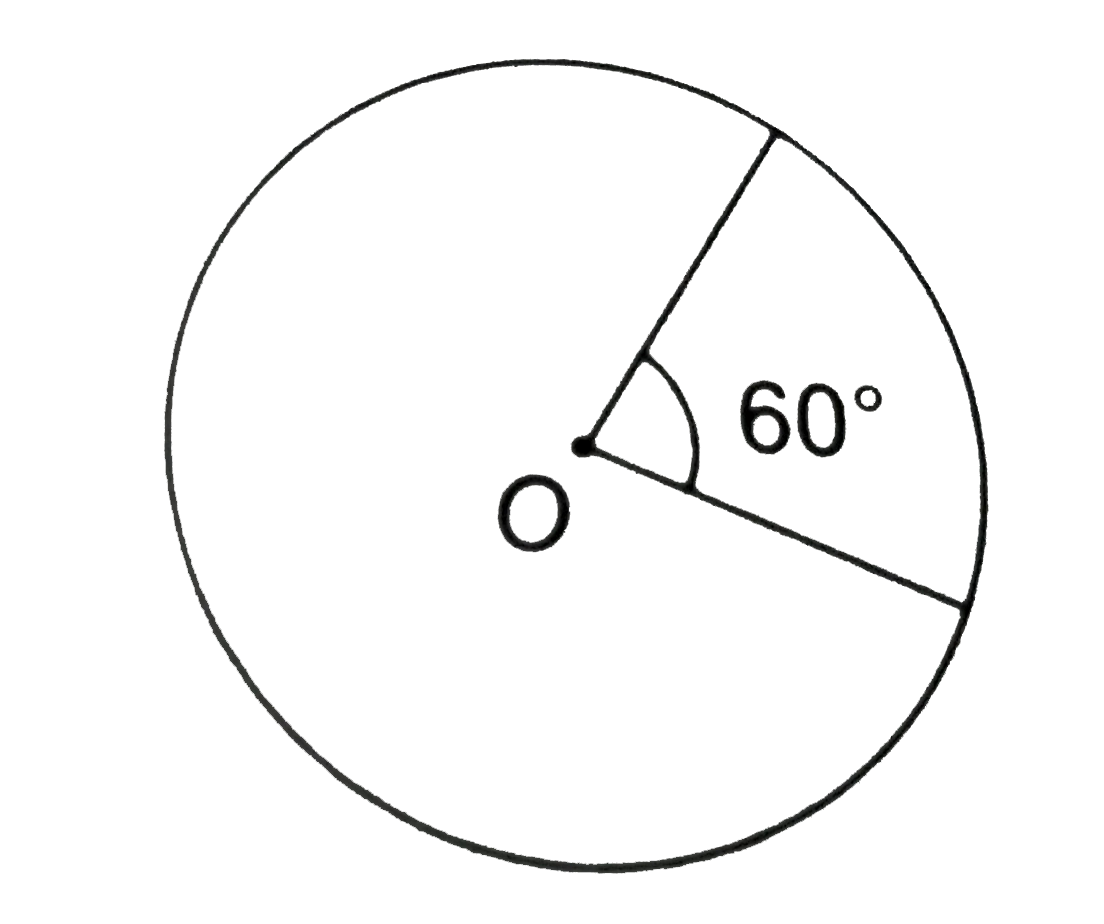A thin uniform circular disc of mass M and radius R is rotating in a horizontal plane about an axis passing through its centre and perpendicular to its plane with an angular velocity ω . Another disc of same dimensions but of mass 14 M is placed gently on the first disc co-axially. The angular velocity of the system is
23ω
45ω
34ω
13ω
The correct Answer is:B
To solve the problem, we need to find the new angular velocity of the system after placing the second disc on the first one. We will use the principle of conservation of angular momentum.
1. Identify the Moment of Inertia of the First Disc:
The moment of inertia I1 of a thin uniform circular disc about an axis through its center and perpendicular to its plane is given by:
I1=12MR2
where M is the mass of the first disc and R is its radius.
2. Identify the Moment of Inertia of the Second Disc:
The second disc has a mass of 14M. Its moment of inertia I2 is:
I2=12(14M)R2=18MR2
3. Calculate the Total Moment of Inertia of the System:
The total moment of inertia I′ of the system when both discs are present is:
I′=I1+I2=12MR2+18MR2
To add these, we need a common denominator:
I′=48MR2+18MR2=58MR2
4. Use Conservation of Angular Momentum:
The initial angular momentum Li of the system is:
Li=I1ω=(12MR2)ω
The final angular momentum Lf after the second disc is placed on the first is:
Lf=I′ω′=(58MR2)ω′
According to the conservation of angular momentum:
Li=Lf⟹(12MR2)ω=(58MR2)ω′
5. Solve for the New Angular Velocity ω′:
Cancel MR2 from both sides:
12ω=58ω′
Rearranging gives:
ω′=1/25/8ω=12⋅85ω=45ω
Final Answer:
The angular velocity of the system after placing the second disc is:
ω′=45ω
The moment of inertia I1 of a thin uniform circular disc about an axis through its center and perpendicular to its plane is given by:
I1=12MR2
where M is the mass of the first disc and R is its radius.
The second disc has a mass of 14M. Its moment of inertia I2 is:
I2=12(14M)R2=18MR2
The total moment of inertia I′ of the system when both discs are present is:
I′=I1+I2=12MR2+18MR2
To add these, we need a common denominator:
I′=48MR2+18MR2=58MR2
The initial angular momentum Li of the system is:
Li=I1ω=(12MR2)ω
The final angular momentum Lf after the second disc is placed on the first is:
Lf=I′ω′=(58MR2)ω′
According to the conservation of angular momentum:
Li=Lf⟹(12MR2)ω=(58MR2)ω′
Cancel MR2 from both sides:
12ω=58ω′
Rearranging gives:
ω′=1/25/8ω=12⋅85ω=45ω
The angular velocity of the system after placing the second disc is:
ω′=45ω
Topper's Solved these Questions
- ROTATIONBOOK - DC PANDEY ENGLISHCHAPTER - ROTATIONEXERCISE - (B) Chapter Exercises
25 Videos
- ROTATIONBOOK - DC PANDEY ENGLISHCHAPTER - ROTATIONEXERCISE - (C) Chapter Exercises
39 Videos
- ROTATIONBOOK - DC PANDEY ENGLISHCHAPTER - ROTATIONEXERCISE - Check point 9.3
15 Videos
- RAY OPTICSBOOK - DC PANDEY ENGLISHCHAPTER - RAY OPTICSEXERCISE - Integer type q.
14 Videos
- ROTATIONAL MECHANICSBOOK - DC PANDEY ENGLISHCHAPTER - ROTATIONAL MECHANICSEXERCISE - Subjective Questions
2 Videos
Similar Questions
A thin uniform circular disc of mass M and radius R is rotating in a horizontal plane about an axis passing through its centre and perpendicular to its plane with an angular velocity ω. another disc of the same dimensions but of mass M/4 is placed gently on the first disc coaxially. The angular velocity of the system now is 2ω/√5.
View SolutionA ring of mass m and radius r rotates about an axis passing through its centre and perpendicular to its plane with angular velocity ω. Its kinetic energy is
View SolutionThe moment of inertia of a copper disc, rotating about an axis passing through its centre and perpendicular to its plane
View SolutionRadius of gyration of a uniform circular disc about an axis passing through its centre of gravity and perpendicular to its plane is
View SolutionA disc of mass m, radius r and carrying charge q, is rotating with angular speed ω about an axis passing through its centre and perpendicular to its plane. Calculate its magnetic moment
View SolutionA disc of mass m, radius r and carrying charge q, is rotating with angular speed ω about an axis passing through its centre and perpendicular to its plane. Calculate its magnetic moment
View SolutionA metallic circular disc having a circular hole at its centre rotates about an axis passing through its centre and perpendicular to its plane. When the disc is heated:
View SolutionA metallic circular disc having a circular hole at its centre rotates about an axis passing through its centre and perpendicular to its plane. When the disc is heated:
View SolutionIf a circular concentric hole is made on a disc then about an axis passing through the centre of the disc and perpendicular to its plane
View SolutionFrom a circular disc of mass M and radius R, a part of 60∘ is removed. The M.I. of the remaining portion of disc about an axis passing through the center and perpendicular to plane of disc is

View Solution
